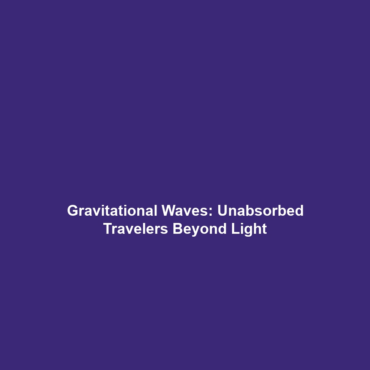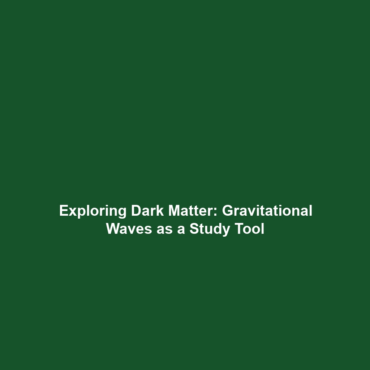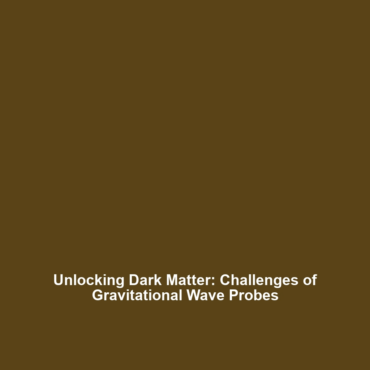How Gravitational Waves Could Provide Insights into Quantum Gravity
Gravitational waves, ripples in the fabric of spacetime caused by massive celestial events, are evolving our understanding of the universe. These elusive phenomena not only confirm Einstein’s predictions but also hold significant promise in exploring the mysteries of quantum gravity. As physicists delve deeper into this interplay, insights from gravitational wave detections could revolutionize our grasp of fundamental theories in physics and cosmology.
Key Concepts
Understanding how gravitational waves could provide insights into quantum gravity involves several major concepts:
- Gravitational Waves: These are produced by extremely energetic events in the universe, such as the collision of black holes or neutron stars. They travel at the speed of light and carry information about their violent origins.
- Quantum Gravity: A theoretical framework that aims to unify quantum mechanics with general relativity, addressing how gravity operates on quantum scales.
- Interactions of Quantum Particles: Gravitational waves may reveal information about how gravity interacts with quantum particles, potentially leading to new insights into dark matter and dark energy.
- Experimental Methods: Detectors like LIGO and Virgo are key to measuring gravitational waves and can help observe phenomena that may not be visible through traditional telescopes.
Applications and Real-World Uses
Understanding how gravitational waves could provide insights into quantum gravity has several real-world applications:
- Astrophysical Observations: Gravitational waves open a new window into observing events like supernovae and neutron star collisions, aiding our understanding of cosmic evolution.
- Testing Theories: They can be used to test theories of quantum gravity, offering empirical data that may support or challenge existing models.
- Detecting Exotic Matter: Insights gained from these phenomena may lead to the identification of exotic particles or states of matter not predicted by current theories.
The applications of gravitational waves in quantum gravity are thus pivotal for advancing both theoretical physics and practical technologies.
Current Challenges
Despite their significance, there are several challenges associated with studying how gravitational waves could provide insights into quantum gravity:
- Detection Sensitivity: Current detectors have limitations in sensitivity and may not detect smaller events or weaker waves.
- Theoretical Models: Developing comprehensive theoretical models that accurately integrate quantum mechanics with gravity remains complex and unresolved.
- Data Interpretation: Analyzing the data from gravitational waves often requires sophisticated models and intricate computational methods, posing a challenge for researchers.
- Funding and Resources: Continued advancements in technology and research funding are essential to overcome these obstacles and enhance detection capabilities.
Future Research and Innovations
Future research aims to overcome current challenges and expand our understanding of gravitational waves and quantum gravity:
- Next-Generation Detectors: Innovations like the planned space-based detector LISA are expected to provide higher precision measurements of gravitational waves.
- Interdisciplinary Approaches: Collaboration between physicists, astronomers, and data scientists will enhance analysis methods and theoretical frameworks.
- Breakthrough Discoveries: Continued advancements may lead to breakthroughs in comprehending fundamental forces, potentially unifying the knowledge of quantum mechanics and gravity.
Conclusion
In conclusion, gravitational waves represent a revolutionary frontier in physics, offering profound insights into quantum gravity. As our detection methods improve and theoretical frameworks evolve, the potential applications and discoveries lie at the intersection of quantum mechanics and cosmological studies. For further exploration of related topics, consider visiting our articles on Quantum Mechanics and Astrophysics.









